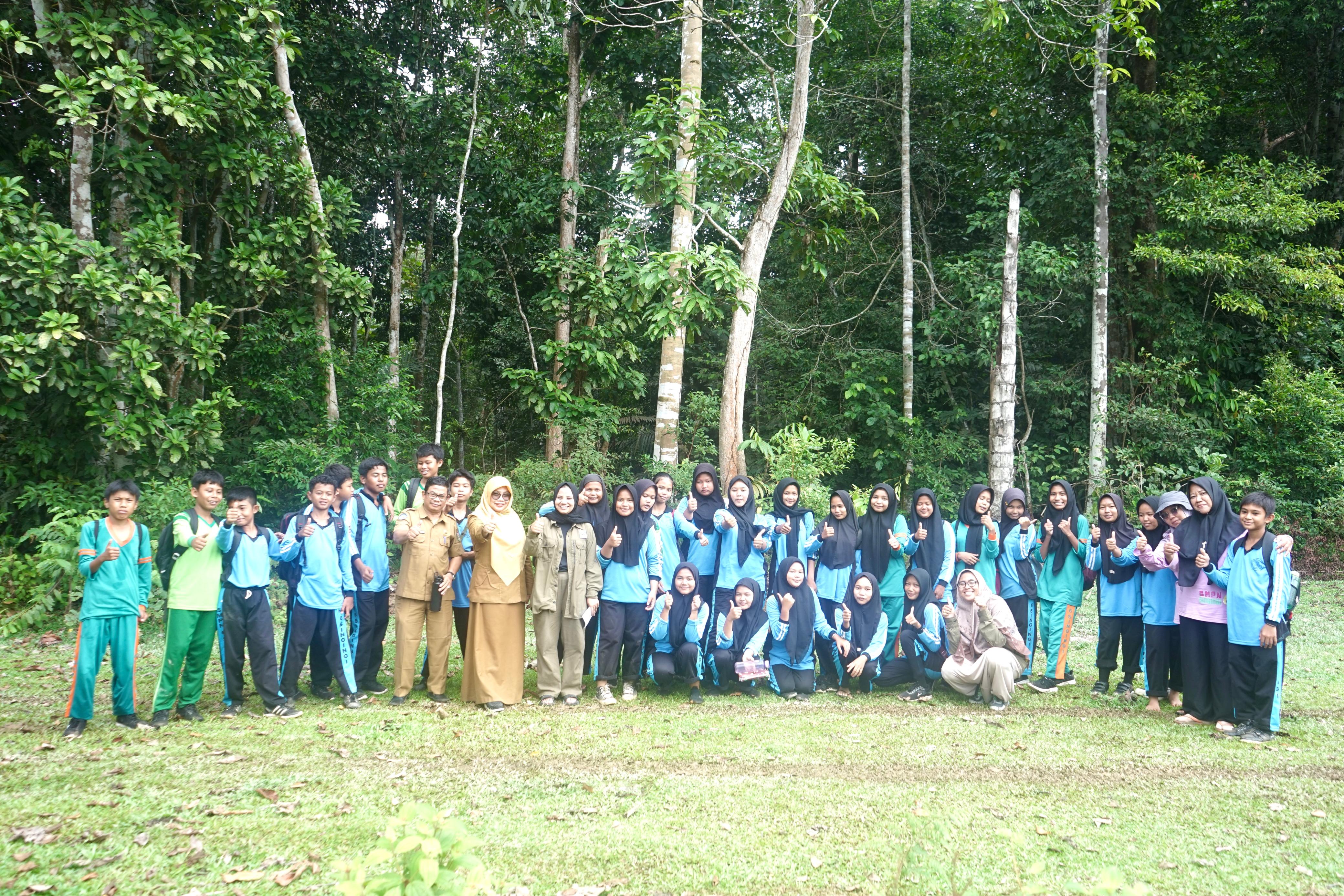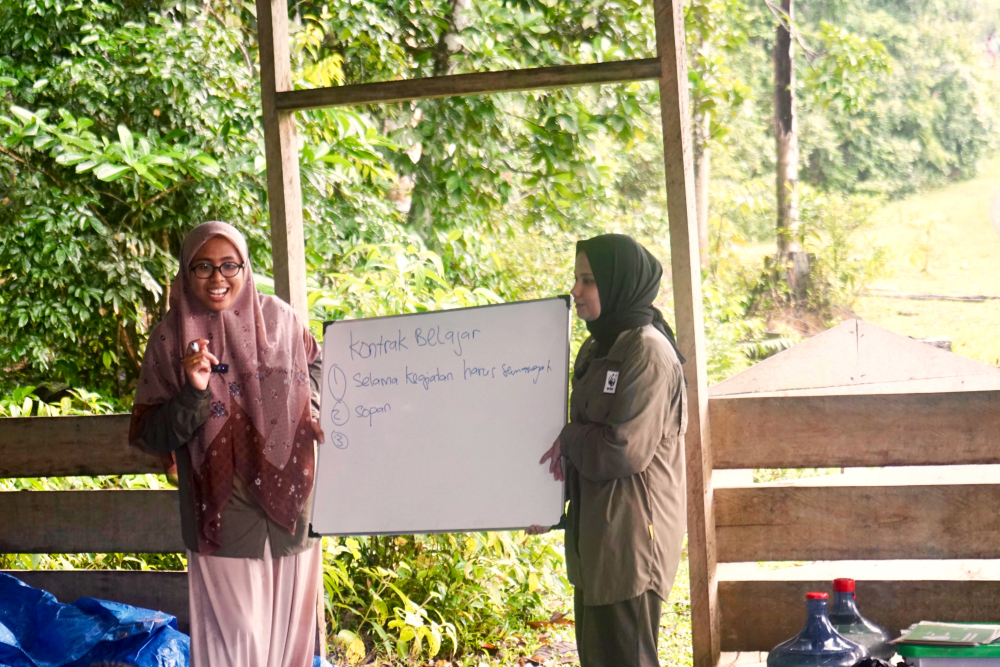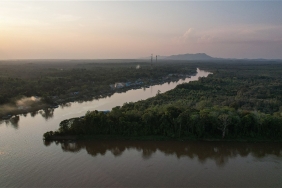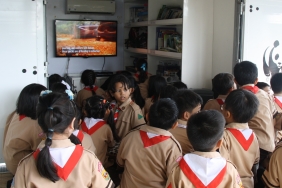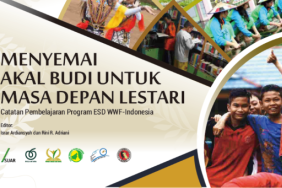SUSTAINABLE CLASS 4: FOREST IS MY BREATH, WATER IS MY LIFE, INDARUNG BASE IS MY HOME
SMPN 6 Singingi is located in Pangkalan Indarung Village, Quantan Singingi Regency, Riau Province, surrounded by Indigenous Forests, Limited Production Forests (HPT), Wildlife Reserves, and Rimba Baling Protection Forest. The existence of these various types of forests provides a beautiful and cool environment for students as well as a rich learning resource for ecological and conservation values. As part of the implementation of Education for Sustainable Development (ESD), a contextual learning activity "Know the trees, Keep sustainability" was held involving students, teachers, school supervisors and ninik mamak in forest exploration. This program aims to create a generation that thinks critically, creatively, and solutively in maintaining environmental sustainability. This activity began with a trip to the Indigenous Forest of Pangkalan Indarung Village, the students were very enthusiastic and eager to participate in this learning.
This activity began with a brief explanation of the Sustainable Development Goals (SDGs), especially SDG 15 which highlights the role of trees in maintaining the balance of terrestrial ecosystems, delivered by WWF representative, Gianni Sonevil. Through a contextual learning approach, students were invited to connect the theories learned in class with real conditions in the environment around them.
After the introductory session, students observed and identified various types of trees found in the indigenous forest using the worksheets that had been prepared. This activity is carried out in groups and guided by local ninik mamak and teachers, so that students not only gain scientific knowledge but also understand local wisdom in forest management.
During the identification process, students learn about various aspects of the tree, including its species and local name, the characteristics of its leaves, trunk, and fruit, the soil conditions in which it grows, and other vegetation around it. With this method, students not only get to know biodiversity directly, but also realize the importance of terrestrial ecosystem conservation in supporting the lives of living things.
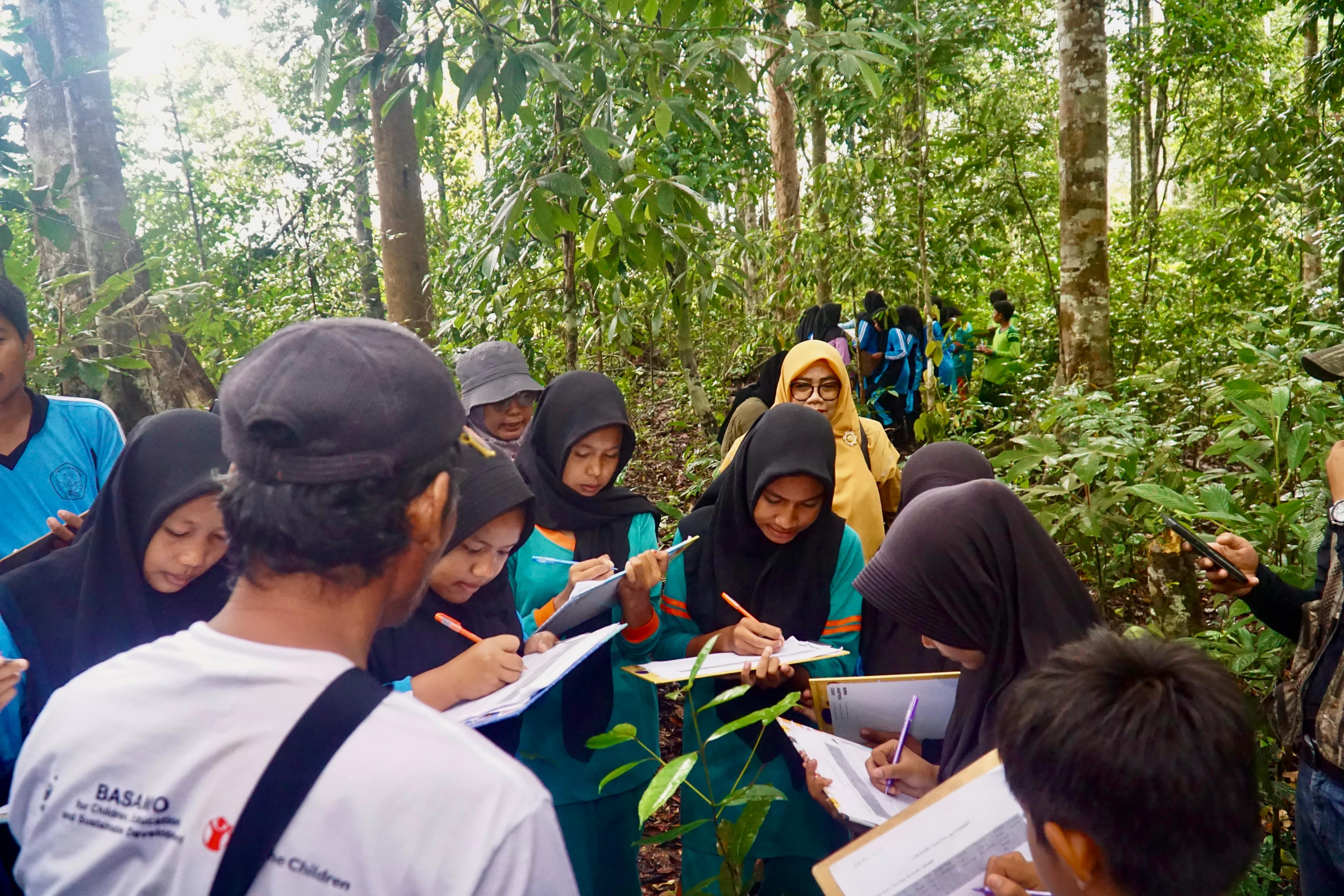
The students also had the valuable opportunity to understand the history of the forests around Pangkalan Indarung Village through a discussion session hosted by Datuk Kepala Adat, Mr. Rafles. In this session, they explored various issues of environmental change, including the impact of deforestation and biodiversity conservation efforts that have been carried out by local communities. With great enthusiasm, the students listened to the stories told, noted down important information, and actively asked questions to deepen their understanding.
Towards the end of the session, Difa, a student from SMPN 6 Singingi, raised her hand and asked curiously, "Datuk, what is the meaning of the phrase 'Forest is my breath, water is my life'?". Mr. Rafles then wisely explained that without forests, humans lose clean air, and without water, life cannot take place. The answer made the students reflect, realizing even more how important it is to protect nature for their future.
To enrich a more interactive learning experience, the activity continued with making leaf rubbing or leaf prints using acrylic paint. Guided by the Cultural Arts teacher, Mrs. Ria Amelia, students recognized the morphological characteristics of leaves directly through a simple yet meaningful technique. They applied acrylic paint to the surface of the leaf, then pressed it onto paper to produce prints that showcase unique patterns-the fine veins, edge shapes, and surface textures are clearly visible in a variety of bright colors.
This activity not only deepened the understanding of plant diversity, but also fostered a sense of appreciation for the details and uniqueness of each species found in the forest. Enthusiastic faces were seen among the students, little hands were busy selecting the best leaves and mixing colors, while joyful laughter could be heard as they compared their prints.
After the observation and discussion session, the activity continued with a reflection on the benefits of trees and their observation findings. In this session, students worked in groups to develop mini-posters or handouts containing information about the tree species found and simple steps in maintaining ecosystem sustainability. This activity was closed with a presentation of the discussion results, awards being given to active participants, and a group photo session as documentation.
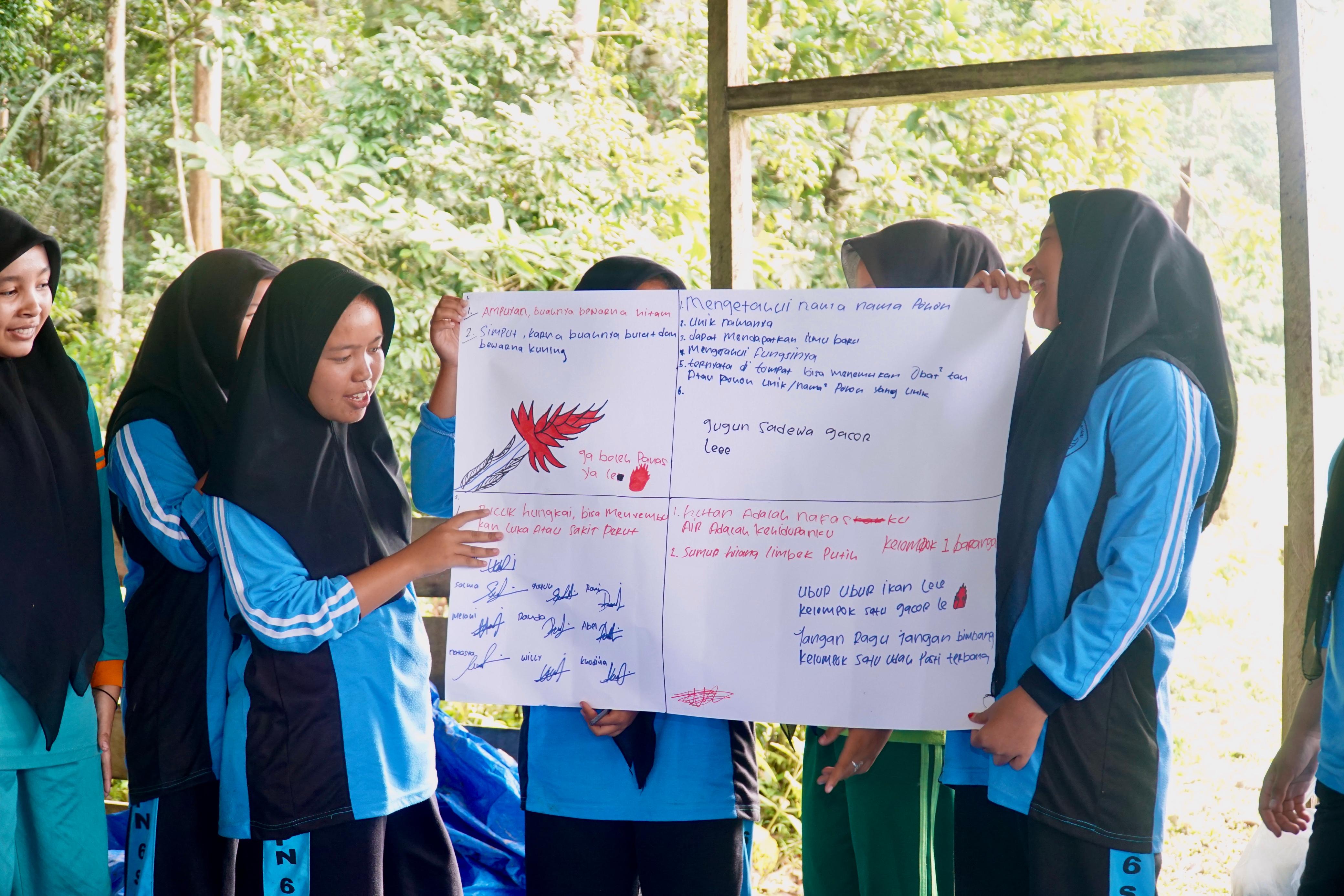
This environmental exploration activity not only provides new insights for students, but also inspires teachers to develop more contextualized environment-based learning. By utilizing protected forests, gardens, and surrounding ecosystems, teachers can create more real and meaningful learning experiences for students. More than that, this activity opens up opportunities for collaboration between schools, communities, and village governments in an effort to preserve the environment.
Through this approach, students not only understand the concept of sustainability in theory, but also play a direct role in real action to protect their village ecosystem. Education for Sustainable Development based on environmental exploration is an important step in shaping a generation that cares, critically, and actively contributes to the preservation of nature.
Mrs. Silvia, one of the accompanying teachers, expressed her impression, "During the 'Know Trees, Keep Sustainability' activity, I saw the students were so enthusiastic and active in learning. They discussed directly with the customary leaders and recognized various types of trees around the settlement. This activity is also a bridge that connects the relationship between Datuk and his nephews and grandchildren. I was happy to hear positive responses from the students. They even hoped that classroom learning could be done using this method."
One of the students, Dadang, also shared his experience with enthusiasm, "This activity is really exciting! I have never learned outside the classroom like this before. It feels more fun and less boring." With the high enthusiasm of the students and the support of the teachers, environmental exploration-based activities like this are a real step in building the awareness and concern of the younger generation for the preservation of nature.
